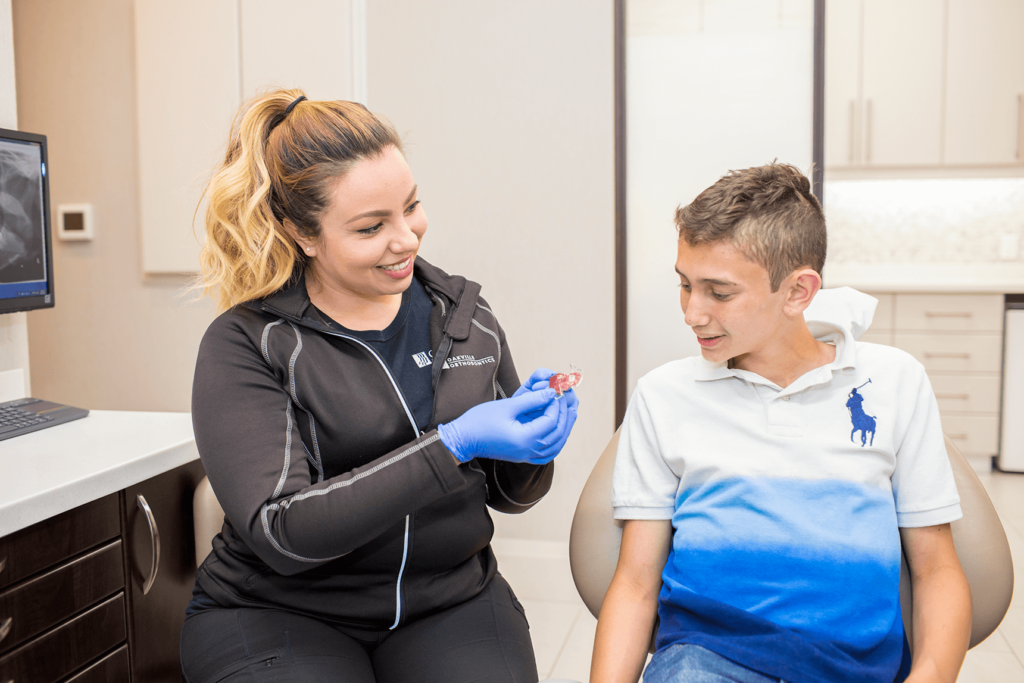EARLY TREATMENT
According to the Canadian and American Association of Orthodontists, kids should have an initial orthodontic screening at age 7. What makes early evaluation — and potentially, early treatment — so important?
There are several ways that kids can benefit from seeing an orthodontist at an early age. In most cases we simply evaluate the bite and monitor your child’s growth patterns until we see that it’s time for treatment to begin. This gives us an opportunity to get the best results in the most efficient way.


When Earlier Treatment Is Better
Treatment for common orthodontic problems typically begins between ages 9-14, when most of the baby teeth are gone and many of the permanent ones are in place. But there are some conditions that are much easier to treat if they’re caught at an early age, when a child’s natural growth processes will be helpful.
1. The first is a crossbite or underbite, a condition where the upper teeth close inside the lower teeth. To treat this problem, a device called an expander can be used, which gradually expands the upper jaw and moves the teeth.
2. Another condition that may benefit from early treatment is severe crowding. This occurs when the jaws are too small to accommodate all of the adult teeth. Either expansion or baby tooth extraction may be recommended at this point, to help the adult teeth erupt properly. Even if braces are required later, the treatment time will likely be shorter and less complicated.
3. Early intervention may also be helpful in resolving protruding teeth, which can be prone to chipping and fractures, and may also lead to problems with a child’s self-image. A deep overlapping bite or tooth grinding may be improved by wearing a removable bite plate.
4. Correction of habits such as persistent thumb or finger sucking, tongue thrusting and mouth breathing, may be important to deal with as soon as possible. Thumbsucking usually disappears between ages 2 and 4. But if it persists much later, the pressure of the finger or thumb on the front teeth and the upper jaw can actually cause the teeth to move apart and the jaws to change shape. Mouth breathing is an abnormal breathing pattern in which the mouth always remains open especially during sleep. These conditions can lead to an orthodontic problem called an “open bite,” and may impair speech and jaw growth. An open bite can also be caused by the force of the tongue pushing forward against the teeth (tongue thrusting).
Various orthodontic treatments are available to help correct these problems. But these potential problems aren’t always easy to recognize. That’s one more reason why you should bring your child in for an early orthodontic screening.
